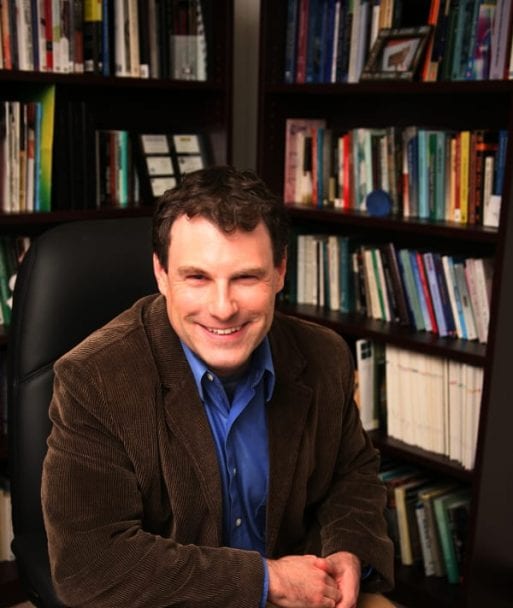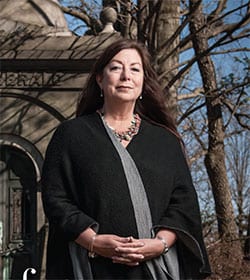
College students are waiting in line to attend classes about death and dying
Credit: greatergood.berkeley.edu
Talking about death isn’t something young people typically do. But if the surge in popularity of college death classes is any indication, more and more college-age kids are taking an interest in a subject that was once strictly taboo. Since as early as the 1970s, thousands of such classes have been added to the curriculum at universities all over the United States. And students can’t get enough of them.
“I like that this is a class where you can speak on your own beliefs and experiences, so you can learn from both the professors and others,” explained Cedric Dunham, a student in the class “Issues in Culture and Society: Death and Dying” at Florida Gulf Coast University in Fort Myers, Florida. The class is taught by Diane Cox, the former CEO and president of a local hospice in Naples, Florida.
“I approached the dean and asked if I could teach the class,” Cox said. “I had a lot of experience with death and dying through my hospice experience and I thought it would be a good idea to teach about it,” she told the Eagle News.
Cox structures her class around group discussions and shared experiences. Although many of the students have had no direct contact with death, they say they learn a great deal from listening to others speak. The lessons they learn are “life lessons,” Cox explains. They don’t end when the semester ends.
Death Classes Address the Whole Spectrum
College death classes cover the whole spectrum of death and dying, although the focus may vary depending on the umbrella under which the class is taught. Some classes hone in on the cultural aspects, while others pay more attention to how people cope with grief and loss. But the majority are all-inclusive, immersing students in every aspect of end of life.

Paul Klugman, Ph.D., designed the death class taught at DePaul University
Credit: uh.edu
Take the aptly named “Death and Dying” course at DePaul University, designed by Craig Klugman, Ph.D. Klugman started teaching the class in 2015 in the Department of Health Sciences. Using the lens of public health, he integrated the physical sciences, humanities and social sciences to introduce students to what it’s like to encounter death first hand.
Students visited a medical examiner’s office where they learned how corpses “tell stories,” Klugman explains. They also heard from medical professionals about the different ways people die, and from natural scientists about the chemical and biological processes that take place after death. Bioethicists talked about “the conversation,” advance care directives, medical aid in dying and euthanasia. Anthropologists discussed cultural perspectives, and psychologists talked about the profound impact of grief. The students even visited a “body farm” where they saw corpses in varying stages of decay.
Students also read novels and short stories and heard from numerous guest lecturers during the 10-week course. They had homework assignments, too. One was to spend several hours visiting a location that had something to do with death, such as a funeral home, medical examiner’s office or crematory. Another was to fill out a “last hours of life” survey to explore how they would want to die. Still another was to write their own obituary.
The last assignment was particularly impactful, Klugman says. “Universally,” he explains, the students said the assignment “made them really think about what was important and what they wanted to make of life.”
At the start of his first “Death and Dying” class, Klugman had 18 students. By day two, he had 24. Many of the students were majoring in health sciences, but some were studying biology, English or anthropology. All came with a willingness to be vulnerable and talk about something that was inherently frightening and difficult, he says.
Death Awareness Teaches Us How To Live
Nor is Klugman’s course an outlier in the college world. According to a Wall Street Journal report, over 600 college campuses in the United States offer death classes of one kind or another, and many of these have long waiting lists. At Kean College in Union, New Jersey, for example, the class “Death in Perspective” taught by Dr. Norma Bowes has a waiting list of over three years. The class gained notoriety when it became the subject of a book, “The Death Class: A True Story About Life” written by Erika Hayasaki, a student who sat in on Bowes’ class and followed her on various excursions for years.

Norma Bowes
Credit:waldenu.edu
But why are students so enthralled with death these days? Shouldn’t young people be out living life instead of exploring the “morbid” subjects of dying and death?
According to Ilene Cupit, a professor at the University of Wisconsin who taught her first death class in 1984: “Death is coming out of the closet,” and college kids want to know more. Some of them are dealing with personal losses, and the opportunity to talk about them with their peers in a structured class provides them an outlet they don’t have anywhere else. Others are simply curious. Certainly, our culture, with its mass shootings and surging suicide rate, gives them plenty of reasons to consider what their own death or the death of someone close to them would be like.
But the overarching reason, according to those who attend and teach classes about death, is that confronting the reality — and the universality — of death forces us to think about the kind of life we want to live. As Dr.Herman Feifel, a psychologist who taught at Brooklyn College wrote over 40 years ago, “The democracy of death encompasses us all … In gaining an awareness of death, we sharpen and intensify our awareness of life.”
Perhaps learning to talk openly about death may be the most important life lesson of all.

 College Death Classes Are Gaining Popularity
College Death Classes Are Gaining Popularity


 Our Annual Seven Holiday Gifts for Someone Who Is Grieving, 2024 Edition
Our Annual Seven Holiday Gifts for Someone Who Is Grieving, 2024 Edition
 “Making Mobiles” by Karolina Merska
“Making Mobiles” by Karolina Merska
 “Hands Up to the Sky” by Michael Franti & Spearhead
“Hands Up to the Sky” by Michael Franti & Spearhead














